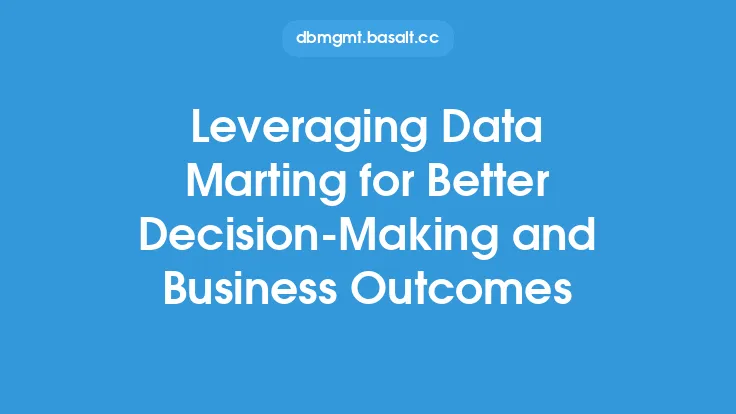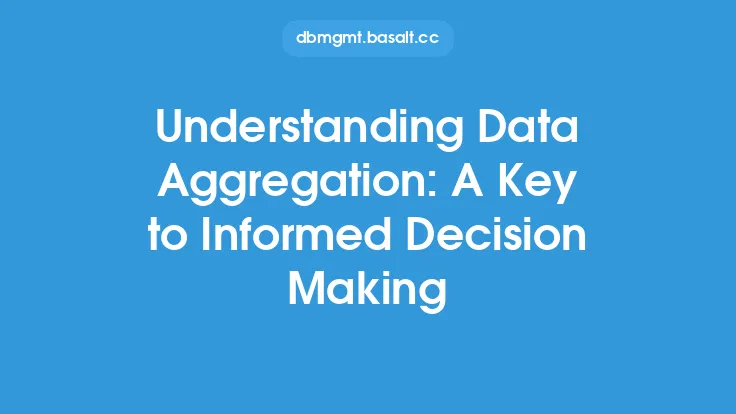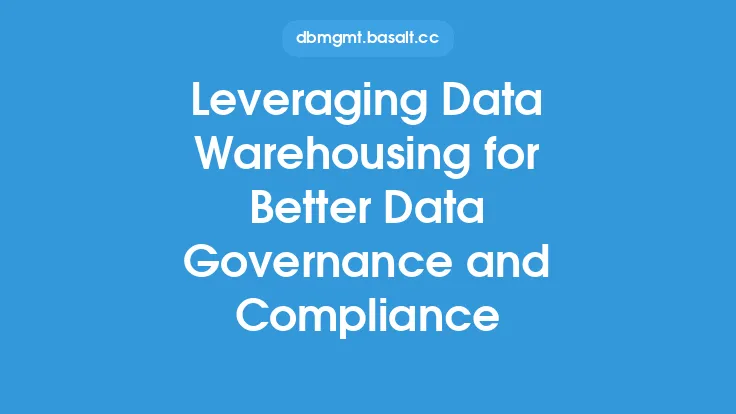Data transformation is a critical step in the data analysis process, as it enables organizations to convert raw data into a format that is suitable for analysis and decision-making. The goal of data transformation is to take the raw data and transform it into a consistent, reliable, and meaningful format that can be used to inform business decisions. In order to optimize data transformation for better decision-making, it is essential to understand the various techniques and tools available, as well as the best practices for implementing data transformation.
Introduction to Data Transformation Techniques
There are several data transformation techniques that can be used to optimize data for analysis. These techniques include data cleaning, data normalization, data aggregation, and data feature engineering. Data cleaning involves removing errors, inconsistencies, and duplicates from the data, while data normalization involves scaling the data to a common range to prevent differences in scales from affecting the analysis. Data aggregation involves combining multiple data points into a single data point, such as calculating the average or sum of a set of values. Data feature engineering involves creating new features or variables from existing ones, such as calculating the ratio of two variables.
Data Transformation Tools and Technologies
There are several tools and technologies available for data transformation, including programming languages such as Python and R, data transformation software such as Informatica and Talend, and data warehousing platforms such as Amazon Redshift and Google BigQuery. These tools and technologies provide a range of features and functionalities for data transformation, including data cleaning, data normalization, and data aggregation. They also provide support for data feature engineering and data visualization, enabling organizations to create new features and variables and to visualize the transformed data.
Best Practices for Data Transformation
In order to optimize data transformation for better decision-making, there are several best practices that organizations should follow. These best practices include defining clear data transformation requirements, using data quality metrics to measure the accuracy and completeness of the data, and testing and validating the transformed data. Organizations should also use data transformation tools and technologies that are scalable and flexible, and that provide support for a range of data formats and sources. Additionally, organizations should consider using data transformation frameworks and methodologies, such as the Extract, Transform, Load (ETL) framework, to guide the data transformation process.
Data Transformation and Data Quality
Data quality is a critical aspect of data transformation, as it directly affects the accuracy and reliability of the transformed data. There are several data quality metrics that can be used to measure the accuracy and completeness of the data, including data completeness, data consistency, and data accuracy. Data completeness refers to the extent to which the data is complete and free from missing values, while data consistency refers to the extent to which the data is consistent and free from errors. Data accuracy refers to the extent to which the data is accurate and free from errors. Organizations should use these metrics to measure the quality of the data and to identify areas for improvement.
Data Transformation and Business Decision-Making
Data transformation plays a critical role in business decision-making, as it enables organizations to convert raw data into a format that is suitable for analysis and decision-making. The transformed data can be used to inform a range of business decisions, including strategic decisions, tactical decisions, and operational decisions. Strategic decisions involve long-term planning and strategy, while tactical decisions involve short-term planning and execution. Operational decisions involve the day-to-day management of the organization. By using transformed data to inform these decisions, organizations can make more informed and effective decisions that drive business success.
Challenges and Limitations of Data Transformation
There are several challenges and limitations of data transformation that organizations should be aware of. These challenges and limitations include data complexity, data volume, and data variety. Data complexity refers to the complexity of the data, including the number of variables, the relationships between the variables, and the data formats. Data volume refers to the amount of data, including the number of rows and columns. Data variety refers to the range of data formats and sources, including structured, semi-structured, and unstructured data. Organizations should be aware of these challenges and limitations and should use data transformation tools and technologies that are designed to handle complex, large, and varied datasets.
Future of Data Transformation
The future of data transformation is likely to be shaped by several trends and technologies, including big data, artificial intelligence, and cloud computing. Big data refers to the large and complex datasets that are generated by organizations, while artificial intelligence refers to the use of machine learning and other techniques to analyze and transform the data. Cloud computing refers to the use of cloud-based platforms and services to store, process, and analyze the data. These trends and technologies are likely to have a significant impact on the field of data transformation, enabling organizations to transform and analyze larger and more complex datasets than ever before.
Conclusion
In conclusion, data transformation is a critical step in the data analysis process, as it enables organizations to convert raw data into a format that is suitable for analysis and decision-making. By using data transformation techniques, tools, and technologies, organizations can optimize data transformation for better decision-making. However, there are several challenges and limitations of data transformation that organizations should be aware of, including data complexity, data volume, and data variety. By understanding these challenges and limitations and by using data transformation best practices, organizations can ensure that their data transformation processes are effective and efficient, and that they are able to make informed and effective decisions that drive business success.





